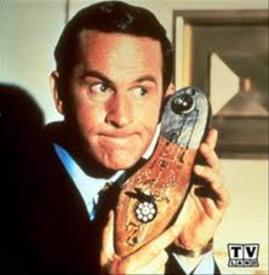Calorie Counting 101

vismal
Posts: 2,463 Member
Calorie Counting 101
With the crazy amount of "I'm eating 1200 calories and I'm not losing weight" or "My weight loss has stalled" threads that get posted every day I decided to copy a calorie counting sticky I wrote for another forum. This is a guide to help ensure as much accuracy as possible when counting calories. It may seem OCD to some but for beginners I feel the more accurate they can be, the better. Before you post about how you can't count calories because of an ED, this thread isn't for you. If you have psychological issues with counting calories, simply don't. This thread is to help those who want to use calorie counting as a means to lose weight. It is based on the fact that if you eat less calories then you burn in a day you will lose weight. If you do not believe in this fact then please just don't post here. This thread is also not about how much you should eat and what you should eat. It is simply about how to accurately track what you do eat. Please keep the reply's to things that deal with calorie counting. If you want to talk about any of the aforementioned things, start a new thread.
Logging foods: In the old days, to calorie count, we had to use paper and pencil. This is why programs like weight watchers became so popular. It essentially dumbed down calorie counting to a point system and made things easier to track. With the advent of software like Myfitnesspal, there is no need for the dumbing down. You can track calories, macro nutrients, micro nutrients, and exercise with very little hassle.
To correctly implement calorie counting you must log everything you consume in a day that contains calories. This includes liquids and/or supplements that contain calories. Some people also log calorie free foods (gum, diet soda, black coffee, etc). Since they do not contain any calories, this is optional. They may however contain something that you want to track (vitamins, minerals, sodium).
Weighing foods: You must weigh your foods! Do not estimate! Weigh everything on a kitchen scale. Preferably a digital scale that weighs in grams. Only liquids should be measured by volume (cups tablespoons, etc). On a package of oatmeal the label will usually say that a serving size is ½ cup. It will also have 40g in parentheses. Use a scale to weigh out 40 grams. You will find that if you dump oats into a ½ cup measuring cup that it won’t always equal 40 grams. This becomes more important with calorically dense food such as peanut butter. 1 tablespoon is usually 100 calories, however one can easily put 2-3 “tablespoons” worth of peanut butter on the end of a normal kitchen spoon. Instead weigh the peanut butter according to how many grams are in a serving. The same goes for scoopers found in supplements. One scoop of whey does not always equal 1 serving. Always weigh your whey! Here are some links to a couple of kitchen scales for purchase:
http://www.amazon.com/EatSmart-Precision-Digital-Kitchen-Silver/dp/B001N07KUE/ref=sr_1_5?ie=UTF8&qid=1391480839&sr=8-5&keywords=eatsmart+scale
http://www.amazon.com/Ozeri-Digital-Multifunction-Kitchen-Elegant/dp/B004164SRA/ref=sr_1_1?ie=UTF8&qid=1391480816&sr=8-1&keywords=food+scale
[b[Handling foods with no nutritional information[/b]: Sometimes fruits, vegetables, and meats do not come with nutritional information. The USDA has a comprehensive list of nearly all fruits, vegetables, and many different cuts of meats in grams.
http://ndb.nal.usda.gov/ndb/search/list
Using myfitnesspal you can simply search the fruit, vegetable, or meat with “usda” afterwards to obtain the same nutritional information. When weighing meat, ALWAYS WEIGH IT RAW. The nutritional facts are based on the raw weight of meat unless packaging specifically states otherwise. This is true for just about any food you cook. If you are simply searching the database for a food with no nutritional information, be wise at what you pick. Don't pick the one option that is significantly lower in calories then all the others simply because it is. You must also be careful with the bar code scanner. Sometimes the scanner will not give you the correct product. Verify this whenever possible.
Dining out: When dining out, attempt to find nutritional information on the restaurant you are at. Many larger chains have all that information available. Know that this is somewhat of an estimate as they are not weighing things to the gram in the kitchen. They also might be liberal with ingredients like butter and oil which can add up quickly. If the restaurant does not provide nutritional information for their meals, attempt to deconstruct your meal and track it piece by piece. If you want to be 100% accurate you can bring a scale to a restaurant. This not something I do as I don't often eat out, but depending on how accurate you wish to be, it is an option. It's worth considering if you eat out frequently.
Accuracy: Accept the fact that you will never be 100% accurate. The FDA allows for up to a 20% margin of error with nutritional information. You must simply do the best you can possibly do to not let that margin grow any larger by estimating what you have eaten. Along these lines you will find products that claim to be zero calories like mustard, cooking spray, and many others. They actually have somewhere between 0-5 calories per serving. Because of rounding they can claim zero on the label. If you want to be precise, count them as 5 calories a serving. This is increasingly important if you consume these products frequently.
Once you have a solid idea of what your daily/weekly consumption is like, it is easy to manipulate calories to fulfill whatever your goals may be. Before you decide that you need to increase or decrease calories to help accomplish goals, ask yourself “Am I tracking everything correctly?” Are you drinking something with calories and not counting it? Are you weighing everything to the gram? Are you having cheat days/meals that you are not tracking? If you answer yes to any of these then your caloric goals may be correct, you are simply not meeting them. Know that if you eat 1500 calories a day and have a once a week cheat day of 3000 calories you are effectively eating 1714 calories a day. This is why you need to track your cheat days. It's okay to have them but if you track them, you can prevent them from skewing your results.
Tips:Here are some tips that I personally like to use in my own tracking of calories:
When weighing condiments I zero the scale with the container sitting on the scale. I apply the condiments to my food. I then put the container back on the scale. It will read a negative number in grams. That is how much condiment I used. This does not work for aerosols like pam or whip cream.
If my goal is weight loss and am going out to eat at a restaurant with no nutritional information, I reconstruct the meal in myfitnesspal and add 10% to the caloric total. This is in case I underestimated. Research shows humans are notorious at underestimating what they eat. In the rare case I overestimated the calories contained in the meal, I can enjoy a small extra deficit for the day. Even if they do provide nutritional information, this might be worth doing. Again, the chef is going to exercise portion control but he isn't weight his butter or your steak on a food scale and tracking to the gram.
Myfitnesspal lets you enter in your own foods. If something is not in their database you can add it. I get my burritos from Chipotle the same way every time. They have all their nutritional information listed on their website. After I determine the values of my burrito I create the food in MFP and don’t have to bother with it next time. The same goes for Subway.
If you want to weigh liquids, this site will help you based on what liquid you are weighing http://www.convert-me.com/en/convert/cooking/
Final thoughts: Counting calories is in my opinion the best thing one can do to help lose weight. This guide was written to help you be as close to 100% accurate as possible. Some of you might not like the idea of bringing a food scale to a restaurant or weighing condiments. These things aren't musts. If you don’t want to do them then you must accept that you will be less accurate than if you had. If you are a bodybuilder preparing for a competition then you will want to be as accurate as humanly possible. If you are just trying to lose weight with no real deadlines and don’t mind if your diet takes a few weeks longer than planned, feel free to be a little less strict. If you find you are not losing weight despite the fact that your caloric intake is low enough that you should be, then you need to start considering doing things like weighing condiments. Only then can you be truly sure it is time to lower calories. I hope this guide helps you guys. Feel free to add your own tips and ask questions! Again, don't turn this into a debate about anything, that isn't the intention of this thread. Make sure your reply's are about calorie counting!
With the crazy amount of "I'm eating 1200 calories and I'm not losing weight" or "My weight loss has stalled" threads that get posted every day I decided to copy a calorie counting sticky I wrote for another forum. This is a guide to help ensure as much accuracy as possible when counting calories. It may seem OCD to some but for beginners I feel the more accurate they can be, the better. Before you post about how you can't count calories because of an ED, this thread isn't for you. If you have psychological issues with counting calories, simply don't. This thread is to help those who want to use calorie counting as a means to lose weight. It is based on the fact that if you eat less calories then you burn in a day you will lose weight. If you do not believe in this fact then please just don't post here. This thread is also not about how much you should eat and what you should eat. It is simply about how to accurately track what you do eat. Please keep the reply's to things that deal with calorie counting. If you want to talk about any of the aforementioned things, start a new thread.
Logging foods: In the old days, to calorie count, we had to use paper and pencil. This is why programs like weight watchers became so popular. It essentially dumbed down calorie counting to a point system and made things easier to track. With the advent of software like Myfitnesspal, there is no need for the dumbing down. You can track calories, macro nutrients, micro nutrients, and exercise with very little hassle.
To correctly implement calorie counting you must log everything you consume in a day that contains calories. This includes liquids and/or supplements that contain calories. Some people also log calorie free foods (gum, diet soda, black coffee, etc). Since they do not contain any calories, this is optional. They may however contain something that you want to track (vitamins, minerals, sodium).
Weighing foods: You must weigh your foods! Do not estimate! Weigh everything on a kitchen scale. Preferably a digital scale that weighs in grams. Only liquids should be measured by volume (cups tablespoons, etc). On a package of oatmeal the label will usually say that a serving size is ½ cup. It will also have 40g in parentheses. Use a scale to weigh out 40 grams. You will find that if you dump oats into a ½ cup measuring cup that it won’t always equal 40 grams. This becomes more important with calorically dense food such as peanut butter. 1 tablespoon is usually 100 calories, however one can easily put 2-3 “tablespoons” worth of peanut butter on the end of a normal kitchen spoon. Instead weigh the peanut butter according to how many grams are in a serving. The same goes for scoopers found in supplements. One scoop of whey does not always equal 1 serving. Always weigh your whey! Here are some links to a couple of kitchen scales for purchase:
http://www.amazon.com/EatSmart-Precision-Digital-Kitchen-Silver/dp/B001N07KUE/ref=sr_1_5?ie=UTF8&qid=1391480839&sr=8-5&keywords=eatsmart+scale
http://www.amazon.com/Ozeri-Digital-Multifunction-Kitchen-Elegant/dp/B004164SRA/ref=sr_1_1?ie=UTF8&qid=1391480816&sr=8-1&keywords=food+scale
[b[Handling foods with no nutritional information[/b]: Sometimes fruits, vegetables, and meats do not come with nutritional information. The USDA has a comprehensive list of nearly all fruits, vegetables, and many different cuts of meats in grams.
http://ndb.nal.usda.gov/ndb/search/list
Using myfitnesspal you can simply search the fruit, vegetable, or meat with “usda” afterwards to obtain the same nutritional information. When weighing meat, ALWAYS WEIGH IT RAW. The nutritional facts are based on the raw weight of meat unless packaging specifically states otherwise. This is true for just about any food you cook. If you are simply searching the database for a food with no nutritional information, be wise at what you pick. Don't pick the one option that is significantly lower in calories then all the others simply because it is. You must also be careful with the bar code scanner. Sometimes the scanner will not give you the correct product. Verify this whenever possible.
Dining out: When dining out, attempt to find nutritional information on the restaurant you are at. Many larger chains have all that information available. Know that this is somewhat of an estimate as they are not weighing things to the gram in the kitchen. They also might be liberal with ingredients like butter and oil which can add up quickly. If the restaurant does not provide nutritional information for their meals, attempt to deconstruct your meal and track it piece by piece. If you want to be 100% accurate you can bring a scale to a restaurant. This not something I do as I don't often eat out, but depending on how accurate you wish to be, it is an option. It's worth considering if you eat out frequently.
Accuracy: Accept the fact that you will never be 100% accurate. The FDA allows for up to a 20% margin of error with nutritional information. You must simply do the best you can possibly do to not let that margin grow any larger by estimating what you have eaten. Along these lines you will find products that claim to be zero calories like mustard, cooking spray, and many others. They actually have somewhere between 0-5 calories per serving. Because of rounding they can claim zero on the label. If you want to be precise, count them as 5 calories a serving. This is increasingly important if you consume these products frequently.
Once you have a solid idea of what your daily/weekly consumption is like, it is easy to manipulate calories to fulfill whatever your goals may be. Before you decide that you need to increase or decrease calories to help accomplish goals, ask yourself “Am I tracking everything correctly?” Are you drinking something with calories and not counting it? Are you weighing everything to the gram? Are you having cheat days/meals that you are not tracking? If you answer yes to any of these then your caloric goals may be correct, you are simply not meeting them. Know that if you eat 1500 calories a day and have a once a week cheat day of 3000 calories you are effectively eating 1714 calories a day. This is why you need to track your cheat days. It's okay to have them but if you track them, you can prevent them from skewing your results.
Tips:Here are some tips that I personally like to use in my own tracking of calories:
When weighing condiments I zero the scale with the container sitting on the scale. I apply the condiments to my food. I then put the container back on the scale. It will read a negative number in grams. That is how much condiment I used. This does not work for aerosols like pam or whip cream.
If my goal is weight loss and am going out to eat at a restaurant with no nutritional information, I reconstruct the meal in myfitnesspal and add 10% to the caloric total. This is in case I underestimated. Research shows humans are notorious at underestimating what they eat. In the rare case I overestimated the calories contained in the meal, I can enjoy a small extra deficit for the day. Even if they do provide nutritional information, this might be worth doing. Again, the chef is going to exercise portion control but he isn't weight his butter or your steak on a food scale and tracking to the gram.
Myfitnesspal lets you enter in your own foods. If something is not in their database you can add it. I get my burritos from Chipotle the same way every time. They have all their nutritional information listed on their website. After I determine the values of my burrito I create the food in MFP and don’t have to bother with it next time. The same goes for Subway.
If you want to weigh liquids, this site will help you based on what liquid you are weighing http://www.convert-me.com/en/convert/cooking/
Final thoughts: Counting calories is in my opinion the best thing one can do to help lose weight. This guide was written to help you be as close to 100% accurate as possible. Some of you might not like the idea of bringing a food scale to a restaurant or weighing condiments. These things aren't musts. If you don’t want to do them then you must accept that you will be less accurate than if you had. If you are a bodybuilder preparing for a competition then you will want to be as accurate as humanly possible. If you are just trying to lose weight with no real deadlines and don’t mind if your diet takes a few weeks longer than planned, feel free to be a little less strict. If you find you are not losing weight despite the fact that your caloric intake is low enough that you should be, then you need to start considering doing things like weighing condiments. Only then can you be truly sure it is time to lower calories. I hope this guide helps you guys. Feel free to add your own tips and ask questions! Again, don't turn this into a debate about anything, that isn't the intention of this thread. Make sure your reply's are about calorie counting!
Tagged:
224
Replies
-
Yes. In.
Should be a sticky.
^^ Seconded9 -
one more thing...just in case you can edit it...
choosing correct entries...just because you weight and log if you don't choose the right entries you are doomed...ie 5 chicken wings with 386 calories and 53grams of protien I saw in someone's diary....or the 6oz steak entry with 98grams of protien...ick.
ETA: great post tho I agree.16 -
Good point! That does happen often that you scan something or search and it's wrong...I'll edit!one more thing...just in case you can edit it...
choosing correct entries...just because you weight and log if you don't choose the right entries you are doomed...ie 5 chicken wings with 386 calories and 53grams of protien I saw in someone's diary....or the 6oz steak entry with 98grams of protien...ick.
ETA: great post tho I agree.7 -
bumping to share later. Great post!2
-
This is a great topic, relevant to everyone who's in this weight loss game, and something that is widely misunderstood.8
-
I agree. Calories listed anywhere cannot be taken as gospel. I'd also like to mention (and I'll keep it brief), that the same goes for calories burned. There are too many intangibles that cannot be accounted for. One of my favorite examples is form. New runners, especially those who are overweight, will often bounce while they walk/ run at speeds they are not used to. They also will often sway from side to side. An experienced runner's form will be tight with deliberate movements. The inexperienced runner with bad form (if running at the same pace) will burn more calories from their form alone. A machine or exercise expert cannot accurately assess your form during every workout. A person could do the same exercise (say running at 5mph on a 5 degree incline) every day for a week and have used varying amounts of energy. This is why I never eat back calories I burn.25
-
I weigh everything, including liquids (while in their measuring cups). I don't use grams though, I use ounces. Does that make a huge difference? I just use an online converter if I find something in grams in the database to know how many ounces it is. But I routinely see everyone using grams as opposed to ounces. My scale has the feature to change between grams, ounces, pounds, and millimeters. Should I be weighing in grams always?6
-
grams are more finite, but if you're using solid ounces the end result is the same. Such as 14 g = .5 oz. It also gets confusing because there is a liquid ounce and solid ounce, and some people may not realize you can't assume 4 solid ounces to be 1/2 cup just because 4 liquid ounces is 1/2 cup.
(Maybe the metric system is brilliant - having different terms for different types of measurement!)7 -
I recommend grams because regardless of if the serving size is 3 cups, 2 pieces, 1 container, 4 oz, it will always give a number in grams in parenthesis. Since you always have a number in grams it saves you the trouble of having to convert from grams to ounces all the time. Plus if the serving is something like 22 grams, that's going to be .78571 ounces. Not a fun number to deal with...9
-
My Trident sugarfree gum has 5 calories per piece, I log it.11
-
Great Info!1
-
I have that bb.com sticky bookmarked and didn't even realize it was your post. Great info!!
Even though I've owned a kitchen scale for years and weigh most of my food, I only recently started weighing my whey and was surprised to find out a "scoop" is often up to 33% more than what the label states.3 -
In.2
-
Duff's (just had some for lunch Sunday) are 670 calories for 10 wings, but it is not the calories so much as the 37 grams of fat, 10 of it saturated, that can mess with your macros, and the whopping over 6000 grams of sodium...people with high blood pressure should avoid this.one more thing...just in case you can edit it...
choosing correct entries...just because you weight and log if you don't choose the right entries you are doomed...ie 5 chicken wings with 386 calories and 53grams of protien I saw in someone's diary....or the 6oz steak entry with 98grams of protien...ick.
ETA: great post tho I agree.
All the entries in your database for Duff's said 530, I used one but later added my own with 670 calories. There are 77 grams of protein in 10 buffalo wings, so I don't see how there are 53 in 5 unless they are eating the whole wing not just the drumette.
One more thing, the reason I stopped my diet place (besides that I needed more calories due to lifting) is it was driving me nuts measuring vegetables in cups, ever try to measure a cup of asparagus? Everything was cups except meat was ounces. I use the gram setting on my scale, so much easier, tare the plate, measure item 1, tare the plate, measure item 2, etc., no stupid cups involved except for liquids, but I drink mostly water anyway.2 -
Geez, you must have a never-ending supply of self-control and motivation to do something like this (weighing to the gram, always overestimating calorie amount, etc.).5
-
This content has been removed.
-
Geez, you must have a never-ending supply of self-control and motivation to do something like this (weighing to the gram, always overestimating calorie amount, etc.).
You do whatever it takes. Not having self-control and motivation is what makes us complacent.22 -
Great Topic! Thanks for writing this! :drinker:5
-
Thank you for taking the time to write this out. So very helpful!2
-
Thanks for this excellent post...I needed a few reminders!3
-
I keep a look out for your posts; always great.1
-
Right now I don't weigh things (just haven't gotten around to buying the scale yet) However I still have quite a bit to lose and I am losing pretty steadily so far so good. Am I right to assume the closer I get to my goal, I'll have to be more exact?2
-
You ALWAYS post something informative and helpful! I'm loving it! :drinker:0
-
Very good info. Accurate, consistent tracking works every time.0
-
This is the case for most people. I lost half my weight without weighing foods but when I got leaner it became more and more important to track accurately.Right now I don't weigh things (just haven't gotten around to buying the scale yet) However I still have quite a bit to lose and I am losing pretty steadily so far so good. Am I right to assume the closer I get to my goal, I'll have to be more exact?8 -
Btw. I think it's amazing how you take the time to help people on here. YOU are amazing. And good job on the weightloss!7
-
In case some are not aware, there are many entries in the database which were entered by MFP (no *) for liquids such as milk & oil. I weigh EVERYTHING not just solids. There are very few things that don't have a standard MFP entry if you know how to search.0
-
Great post - more people need to read this!1
-
This was so helpful! The condiment trick is genius. I do hope you could add exercise estimates eventually (if you're knowledgeable on that subject) because that's so hard to track. Would we maybe reverse the adding 10% like you did with the food and subtract 10% of the exercise calories? Definitely sticky this!3
-
You talked about the 20% margin of error on food labels. Do you use the label for the nutrient information or a govt website?2
Categories
- All Categories
- 1.4M Health, Wellness and Goals
- 398.1K Introduce Yourself
- 44.7K Getting Started
- 261K Health and Weight Loss
- 176.4K Food and Nutrition
- 47.7K Recipes
- 233K Fitness and Exercise
- 462 Sleep, Mindfulness and Overall Wellness
- 6.5K Goal: Maintaining Weight
- 8.7K Goal: Gaining Weight and Body Building
- 153.5K Motivation and Support
- 8.4K Challenges
- 1.4K Debate Club
- 96.5K Chit-Chat
- 2.6K Fun and Games
- 4.8K MyFitnessPal Information
- 12 News and Announcements
- 21 MyFitnessPal Academy
- 1.5K Feature Suggestions and Ideas
- 3.2K MyFitnessPal Tech Support Questions
























